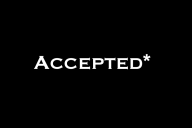You have /5 articles left.
Sign up for a free account or log in.
James Baldwin observed, “Any real change implies the breakup of the world as one has always known it, the loss of all that gave one an identity, the end of safety.” Higher education has had an identity and a financial crisis hit it all at the same time. Safety of those in power and the very institutions of higher education are being questioned due to the worldwide protests following the murder of George Floyd and the economic catastrophe that has accompanied a global pandemic.
Where does higher education go from here? You may be thinking, “What can I do now that would change my campus for the better, that would challenge the status quo?”
We understand it seems hopeless and overwhelming to try to fundamentally change colleges and universities. Most of these institutions are based on anti-Black racism, have profited off slavery, maintain the status quo and are corporate entities that put profit before people. How are they ever going to change if they are founded on white dominance, perpetuate white supremacy/corporate culture and only respond to issues of racial, class and gender justice when their interests converge with, and/or their pocketbooks are affected by, students from oppressed backgrounds? It is easy to think that higher education can never really change and that diversity measures are just window dressing.
In the list below, we offer practical short-term and long-term action for faculty and administrators who desire to respond to the clarion call of the Black Lives Matter movement to stop police brutality in our cities/on our campuses as well as to tear down statues and statutes that perpetuate a culture of white dominance and deny wealth-/power-sharing opportunities, respectively. Here are some concrete steps administrators and faculty members can take this fall, organized by the stage you are in now (beginner, intermediate or advanced).
Change your behavior -- and encourage others to do so, too. Baldwin said, “Not everything that is faced can be changed, but nothing can be changed until it is faced.” The first step to enact change on campus is to start with yourself.
- Beginner: Use a journal, blog or other reflection method to critically reflect on your own racial identity, social power and relative privilege. That may be uncomfortable, especially if you have never done it before. Starting here can build your stamina to become comfortable in your discomfort.
- Intermediate: Once you have a firm understanding of your own social identity and the typical ways your biases show up, you are ready to flex your active bystander skills. That means understanding and habitually intervening (as your safety allows) when you see people experience microaggressions, gaslighting or other racial violence in meetings, during their performance evaluations or in informal conversations.
- Advanced: If you have mastered how to navigate personal and relational levels of identity awareness, you are ready to identify your own sphere of influence, set goals for personal learning, move forward with dismantling policies and procedures that are anti-Black, and replace those policies and procedures with ones that are justice-centric.
Use data to revise policies within your area. To disrupt institutional complacency, you have to know where the problems are and have a plan to solve them. Create a data-driven local action plan using new or existing climate/outcomes data.
- Beginner: Study your campus to determine what data are available to you. You can review your campus websites and reach out to your campus equity, diversity and inclusion personnel to learn more about the efforts taken to date.
- Intermediate: If you notice your campus data are stale, advocate to collect climate data this academic year. Consider using a ready-made instrument or a consultant that requires the president to sign off on following through on the recommendations generated by the climate survey. If you need a more local place to start, you can look at disaggregated data for your own courses and/or collaborate with your institutional research office to draft a climate survey of your department to take the pulse of the lived experience of your Black/brown co-workers and your students.
- Advanced: If you are in a leadership position or have leverage, you can use available data to create a short- and long-term plan for the information, people and other resources you will need to address the gaps the data reveals. The main focus of these efforts should align with your campus’s existing diversity efforts and should aim to dismantle power-hoarding activities. Remember, Black and brown voices should be centered rather than excluded in this process. Resources should be allocated (or reallocated) according to this plan.
Change culture within your sphere of influence. Culture is an elusive concept, but it generally means the unwritten rules and terms of engagement on campus.
- Beginner: If you have a leadership role that includes scheduling professional development programs or leading meetings, you can also affect change on a large scale by: 1) bringing in quality trainers to discuss anti-Blackness, 2) asking strategic questions that prompt equity action in meetings and 3) building equity into your promotion and tenure approval process. Easy wins include adding equity, diversity and inclusion topics to every agenda for meetings you lead or attend and sending out articles to Listservs that discuss equity.
- Intermediate: Ensure that committee assignments are made fairly and that measures are in place that guard against Black, Indigenous, people of color (BIPOC) disproportionately bearing the responsibility for doing diversity work. One practical example of that can be a department, division and/or college roster that lists the members and the amount and titles of committees on which they serve. Also, if you are a non-Black ally, find a way to gently (or not so gently) question those who are pushing a status quo agenda or promoting a white supremacy culture. Do this thoughtfully in a way that fragile and defensive folks with power won’t fire you.
- Advanced: If your role includes onboarding, performance evaluations or tenure and promotion review, review your templates, policies, training and requirements to root out white supremacy and anti-Blackness. That means weaving habits that change your culture within the employee life cycle. Moreover, ensure the publications and journal placement requirements do not create false and biased distinctions of “rigor.” If a self-evaluation about a personal commitment to anti-Blackness is not already included in the tenure and promotion file, consider encouraging or incentivizing this.
Whether you are just starting out or are well on your journey, please do something this fall! If you are an administrator with access to your institution’s board and the administrative cabinet, advocate for student-centered policies that reduce campus policing of Black/brown students. Walk out of diversity committee meetings that are window dressing efforts with no decision-making power, meant to placate folks of color and white allies/accomplices. Organize, challenge and make changes to policy and procedure where you can.
Remember racism, sexism and classism are pretty much baked into the cake of higher education, so go over your procedures with a fine-tooth comb and get rid of the “way we’ve always done it,” because that thinking is leading to the same toxic status quo. You may not agree with defunding your campus police or replacing problematic leaders, but think about reallocating funds and redistributing power and money to those who need it the most.
Buckle up -- this is going to be a complicated fall term, but you can do this. You can make incremental and radical change that will transform your workplace. We believe in you.








